Posts Tagged ‘Buddha’
Please Call Me by My True Names
~ Thich Nhat Hahn
My joy is like Spring, so warm
it makes flowers bloom all over the Earth.
My pain is like a river of tears,
so vast it fills the four oceans.
~ Thich Nhat Hahn
“When another person makes you suffer,
it is because he suffers deeply within himself,
and his suffering is spilling over.
He does not need punishment; he needs help.
That’s the message he is sending.”
~ Thich Nhat Hanh
Blaming has no positive effect at all, nor does trying to persuade using reason and argument. That is my experience. “No blame, no reasoning, no argument, just understanding. If you understand, and you show that you understand, you can love, and the situation will change”
~ Thich Nhat Hanh
“To understand everything is to forgive everything.”
~ Buddha
“And Jesus said,
‘Father, forgive them,
for they know not what they do.’”
~ Luke 23:34
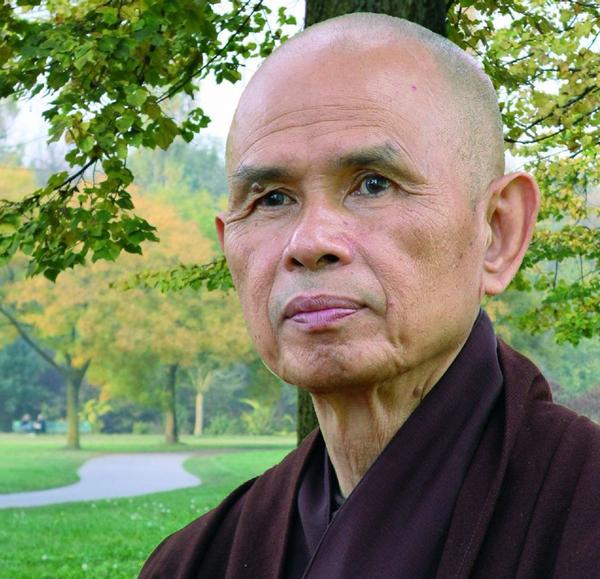
Thich Nhat Hanh
October 11, 1926 – January 22, 2022
Thich Nhat Hahn’s Introduction and Explanation.
I have a poem for you. This poem is about three of us.
The first is a twelve-year-old girl, one of the boat
people crossing the Gulf of Siam. She was raped by a
sea pirate, and after that she threw herself into the
sea.
The second person is the sea pirate, who was born
in a remote village in Thailand.
And the third person is me.
I was very angry, of course. But I could not take sides against the sea pirate. If I could have, it would have been easier, but I couldn’t. I realized that if I had been born in his village and had lived a similar life – economic, educational, and so on – it is likely that I would now be that sea pirate.
So it is not easy to take sides.
Out of suffering, I wrote this poem.
It is called “Please Call Me by My True Names,” because I have many names, and when you call me by any of them, I have to say,
“Yes.”
Please Call Me by My True Names
Don’t say that I will depart tomorrow —
even today I am still arriving.
Look deeply: every second I am arriving
to be a bud on a Spring branch,
to be a tiny bird, with still-fragile wings,
learning to sing in my new nest,
to be a caterpillar in the heart of a flower,
to be a jewel hiding itself in a stone.
I still arrive, in order to laugh and to cry,
to fear and to hope.
The rhythm of my heart is the birth and death
of all that is alive.
I am the mayfly metamorphosing
on the surface of the river.
And I am the bird
that swoops down to swallow the mayfly.
I am the frog swimming happily
in the clear water of a pond.
And I am the grass-snake
that silently feeds itself on the frog.
I am the child in Uganda, all skin and bones,
my legs as thin as bamboo sticks.
And I am the arms merchant,
selling deadly weapons to Uganda.
I am the twelve-year-old girl,
refugee on a small boat,
who throws herself into the ocean
after being raped by a sea pirate.
And I am the pirate,
my heart not yet capable
of seeing and loving.
I am a member of the politburo,
with plenty of power in my hands.
And I am the man who has to pay
his “debt of blood” to my people
dying slowly in a forced-labor camp.
My joy is like Spring, so warm
it makes flowers bloom all over the Earth.
My pain is like a river of tears,
so vast it fills the four oceans.
Please call me by my true names,
so I can hear all my cries and my laughter at once,
so I can see that my joy and pain are one.
Please call me by my true names,
so I can wake up,
and so the door of my heart
can be left open,
the door of compassion.
~ Thich Nhat Hahn
Source.
http://www.spiritualnow.com/articles/44/1/Thich-Nhat-Hahn-Poetry-Collection/Page1.html
Song Inspired by Passage From Please Call Me by My True Names.
Awakening From Dream Life to Eternal Life
~ Ron’s Memoirs
“Is all that we see or seem
but a dream within a dream?”
~ Edgar Allen Poe.
This place is a dream.
Only a sleeper considers it real.
Then death comes like dawn,
and you wake up laughing
at what you thought was your grief.
~ Rumi
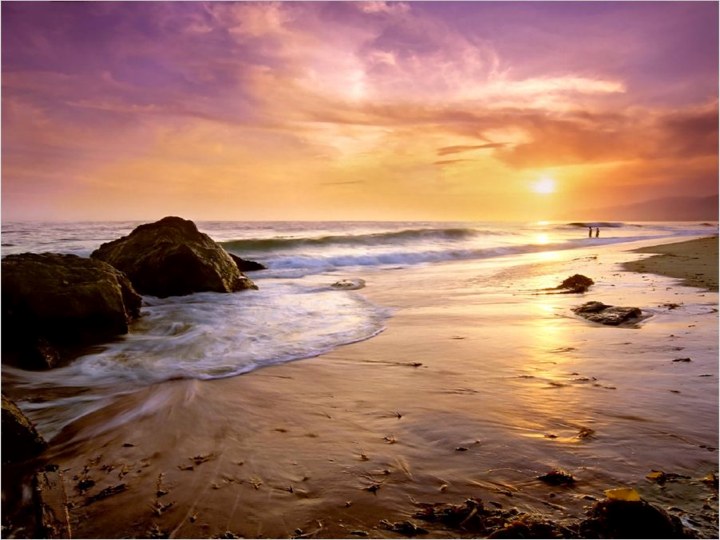
Introduction.
Dear Friends,
Almost every human believes that on awakening from sleep we are experiencing another day in “the real world”. But rare Buddha-like beings say that this relative “reality” isn’t really Real; that it is like a daytime dream, or a mirage, from which we are destined to awaken.
“The world, indeed, is like a dream
and the treasures of the world are an alluring mirage!”
~ Buddha
For millennia “enlightened” mystics and sages have likened our supposedly awakened earth life to nocturnal dream life, saying we are not truly awakened if we self-identify as entities separate from Nature and from all else in our perceived world of impermanent forms and phenomena.
Nighttime dreams are mental images arising on a ‘screen’ of formless awareness. Similarly our supposedly “real world” arises from mental images perceived and projected on the same screen of formless awareness that perceives nocturnal dreams.
Such formless awareness is the identical consciousness in which all dreams arise. It is universal and beyond time and space, beyond birth and death. (In the Bible it is called “everlasting life” [Daniel 12:1-3] and “eternal life” [e.g. John 17:1-2] ) And, from a ‘Buddha’s–eye’ perspective it is our true Self and ultimate Identity.
Purpose of Earth-life Dream Life.
So mystics say we are here to awaken from our daytime dreams of separation from Nature and its forms, to our True Self identity as non-dual eternal Awareness. And like mystics, quantum scientists have discovered that our supposed “real world” of perceived forms and phenomena is merely impermanent and non-material energy in a universal quantum field. [E=mc2]
“Concerning matter, we have been all wrong.
What we have called matter is energy, whose vibration has been so lowered as to be perceptible to the senses.
There is no matter.”
“There is no place in this new kind of physics for the field and matter, for the [quantum] field is the only reality.”
~ Albert Einstein
Moreover, consistent with the ancient mystics, Einstein realized that space/time relative “reality” is merely an optical illusion of consciousness arising from [ego-mind] thought:
“Reality is merely an illusion, albeit a very persistent one.”
“Our separation of each other is an optical illusion of consciousness.”
“Space and time are not conditions in which we live, they are modes in which we think.”
Yet, like the ancient mystics, Einstein intuited and venerated a transcendent, incomprehensible and inexplicable Omniscience or universal intelligence beyond space/time’s relative “reality”:
“That which is impenetrable to us really exists.
Behind the secrets of nature remains something subtle, intangible, and inexplicable.
Veneration for this force beyond anything that we can comprehend is my religion.”
Awakening From Earth-life Dream Life.
Over forty years ago, I was blessed with the immensely transformative insight that I was not merely my physical body, its thoughts or its story, but the consciousness from which they arose. Since then I’ve gradually been enjoying ever growing happiness and ever less fear of death by increasingly identifying as universal Eternal spirit rather than as a merely mortal separate physical body – viz. more and more as Ram and less and less as Ron. The stories recounted in my spiritual memoirs are all about this awakening process.
But the most unforgettable experience which has best revealed to me that we are all like dreamers awakening from illusory mortality to joyous eternal Reality, was my beloved Guruji’s parting poetic gift described at “My Miraculous Experience on Shri Dhyanyogi’s Mahasamadhi”.
On August 29, 1994, Guruji intentionally left his then one hundred sixteen year old body in India. At the same time, and unaware of Guruji’s transition, I received from him in San Francisco an inspiring poem about our awakening from Earthly dream life of supposed birth and death, to true Reality as Eternal Bliss [Sat-Chit-Ananda].
That simple ‘channeled’ poem was extraordinarily powerful because it was infused with Guruji’s blessing or sankalpa for fulfillment of our deepest Awakening aspirations. So it has remained indelibly imprinted in my heart and on my ‘mental software’. And I have often spontaneously recited it for others.
Here is the original poem, as initially titled, “Dream Life”:
“Dream Life”
When we come to Earth
they call it a birth.
When we leave,
they say we die.
But we really don’t come,
and we really don’t go.
We just dream our lives.
But why?
To awaken as Bliss
from all of this,
Joyous that all is
“I”.
The poem’s verses were received and written without any title. But in the above and later writings and recitations, I added different titles: mostly, “Dream Life” or “I am THAT”.
Also, occasionally I added as concluding lines “I am THAT” or “We are THAT” [and Sanskrit translations “Soham!” and plural “Sovayam”]
Audio and video explanations and recitations of Dream Life poem
For many people, actual or audio/visual recitations of Guruji’s parting gift poem are more powerful than just reading the printed words. So I am sharing with you below two audio/visual recitations, both prefaced with brief explanations of the poem.
Ron’s Mp3 voice recording.
Mp4 video clip (with Ron’s recitation beginning at 1.3m).
This film happened on October 29, 2013, while I was chatting with my poet friend Hippy Dave at San Francisco’s Aquatic Beach. Dave and I were greeted by Andrey Milyayev, a Ukrainian cinematography student who was doing a school documentary film project about artistic life in San Francisco. Andrey asked Dave to recite one of his original poems, and Dave obliged. Whereupon Dave unexpectedly asked me to also recite a poem. So I spontaneously recited the Guruji dream life poem, then calling it “I am THAT”.
Concluding dedication.
May all those who hear or read this poem receive Guruji’s blessing or sankalpa for fulfillment of our deepest Awakening aspirations.
And so may it be!
Ron Rattner
Why Be Here Now?
~ Ron’s Memoirs
“That which is timeless is found NOW.”
~ Buddha
“Life can be found only in the present moment.
The past is gone, the future is not yet here,
and if we do not go back to ourselves in the present moment,
we cannot be in touch with life.”
~ Thich Nhat Hanh
“Always say ‘yes’ to the present moment…
Surrender to what is. Say ‘yes’ to life –
and see how life starts suddenly ..
working for you, rather than against you.”
~ Eckhart Tolle
“If I am not for myself, who will be for me?
If I am only for myself, what am I?
And if not now, when?
~ Hillel
Life is NOW
Ever NOW
Never then.
~ Ron Rattner, Sutra Sayings
Tao and Zen
are NOW,
not then.
~ Ron Rattner, Sutra Sayings
“Remember then: there is only one time that is important – Now! It is the most important time because it is the only time when we have any power.”
~ Leo Tolstoy
“I have realized that the past and future are real illusions,
that they exist in the present,
which is what there is and all there is. ”
~ Alan Watts
The only time you ever have in which to learn anything or see anything or feel anything, or express any feeling or emotion, or respond to an event, or grow, or heal, is this moment, because this is the only moment any of us ever gets. You’re only here now; you’re only alive in this moment.
~ Jon Kabat-Zinn
Freedom is found in the choiceless awareness of our daily existence and activity. Thought is time. Thought is born of experience and knowledge which are inseparable from time and the past. Time is the psychological enemy of man. Our action is based on knowledge and therefore time, so man is always a slave to the past. Thought is ever-limited and so we live in constant conflict and struggle. There is no psychological evolution.”
~ J. Krishnamurti
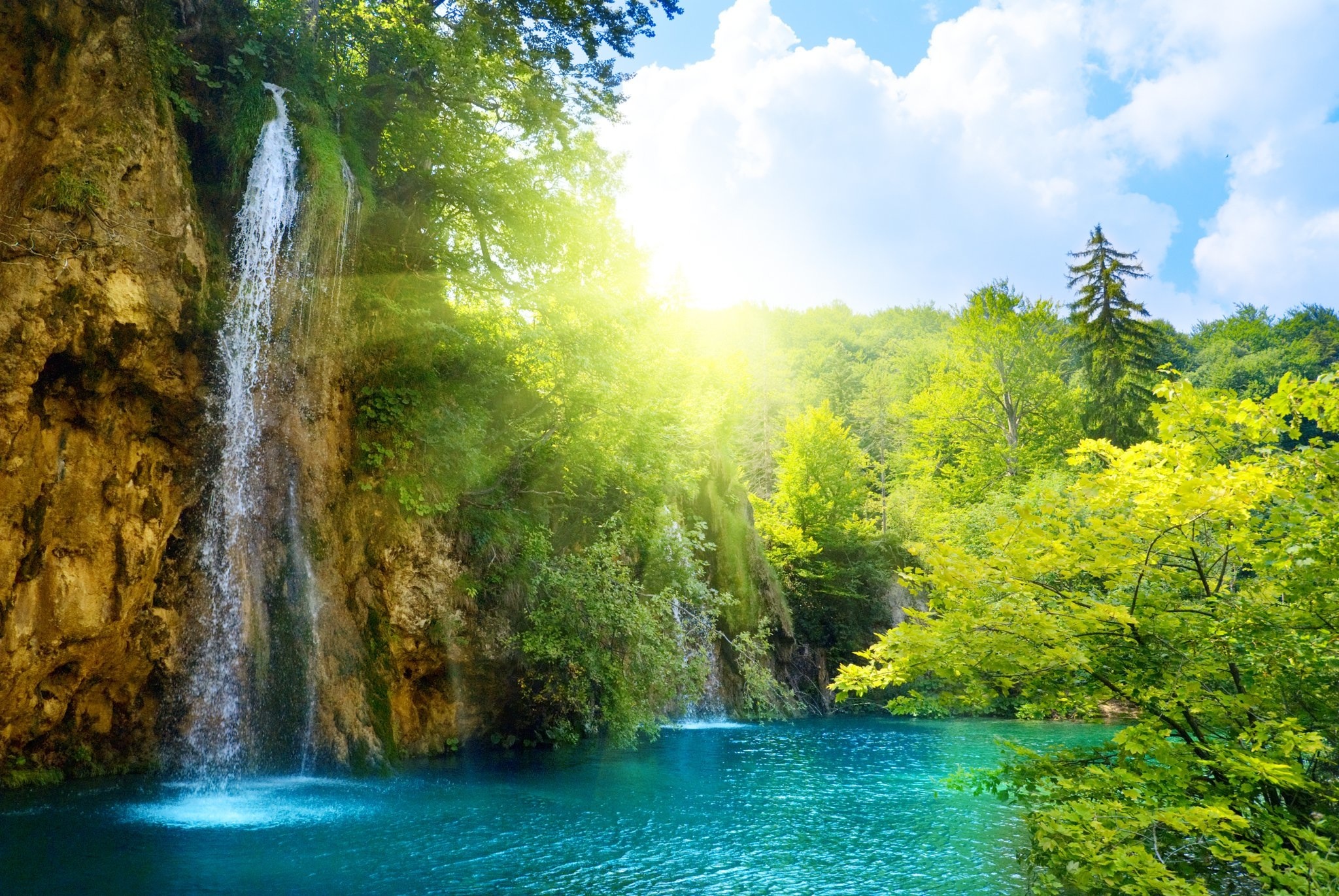
Why Be Here Now?
Introduction.
Today’s memoirs posting “Why Be Here Now?” explains how the memorable book title “Be Here Now” became for me an inspirational spiritual slogan, encapsulating the essence of all spiritual teachings: viz. to live in thoughtless presence (as Universal Awareness) rather than in the past (as an ego-mind story of a separate mortal being); because Life is NOW, ever NOW, never Then!
This universal teaching has so significantly advanced my spiritual awakening process, that I am now experiencing life in ways I couldn’t imagine when I first learned about being in the present moment. So I often share it to help others (as hereafter explained).
Learning to live moment by moment, ever NOW.
Here is a summary of my process of learning about living NOW, as Universal Awareness:
Soon after my midlife spiritual awakening, I attended “est”, an impactful self-help seminar, on the urging of a long-time friend. There I was first exposed to certain (unsourced) Eastern spirituality principles cleverly collected and presented by Werner Erhard, est’s founder, to motivate participants to radically transform their lives by ‘getting IT’. The key est teaching was to:
Always accept “what is”. [See Ron’s Memoirs: Getting “IT” at est]
After attending est in 1977, I started to learn that for millennia there have been spiritual teachings about thoughtlessly accepting “what is” {sometimes called “letting go” or “surrender”). This began happening when I read an extraordinary book called “Be Here Now”, which told about the spiritual transformation of Dr. Richard Alpert, Ph.D, psychologist, into Baba Ram Dass, a Western teacher of Eastern wisdom, after meeting his Hindu guru – Neem Karoli Baba.
Discussion re “Be Here Now” as Root Spiritual Teaching.
“Be Here Now” was my first memorable exposure to Hindu and other sourced Eastern spiritual teachings. It was an extraordinary book, unlike any other I’d ever before seen or read. Filled with beautiful calligraphy, art, and photos, it imaginatively presented a fascinating melange of Eastern ideas previously unknown to me, with many suggestions or ‘recipes’ for spiritual practices, some of which I later followed, though I didn’t immediately adopt any of them.
Apart from the book’s contents, its “Be Here Now!” title gradually became a memorable guide for my spiritual awakening process; a reminder to live with a quiet mind in the present moment. Gradually, I found this reminder repeated so often in other spiritual teachings and books that, ultimately, I considered it to be the root essence of all spiritual teachings. I deemed this teaching so crucial that (with poetic license) I once called it “The Sacred Secret of Life”. (See https://sillysutras.com/secret-of-life/)
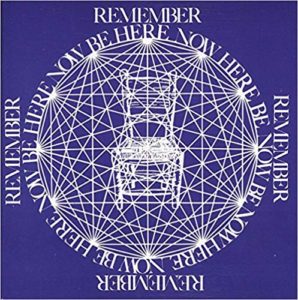
“Be Here Now” by Ram Dass
My realization about the crucial importance of living as thoughtless presence, was especially advanced by the teachings of world renowned spiritual philosopher J. Krishnamurti, that
“Freedom is found in the choiceless awareness of our daily existence and activity.”
~ J. Krishnamurti
Much later I approvingly concurred with the writings and lectures of contemporary author/teacher Eckhart Tolle, which skillfully emphasized “The Power of Now.” (Another memorable book title which became a popular spiritual slogan.)
Probably I best learned about living with a stilled mind by faithfully following for many years my beloved Guruji’s emphatic instructions to “meditate regularly”. Ultimately, after thus meditating regularly, my ‘monkey mind’ finally ceased its ceaseless chatter, permitting me the option of using it or not, and of choosing to enjoy moments of choiceless awareness.
These chosen moments of living with a stilled mind changed my experience and deep understanding of incarnate human life, in previously unprecedented ways. For example, they bestowed new insight into Patanjali’s root aphorism that
“Yoga is the cessation of mind.”
~ Patanjali’s Yoga Sutras
Also I realized that many people (like French philosopher René Descartes) have mistakenly confused “thinking” with “being”. So I wrote an essay critique of that mistaken belief, to remind us that “being” as Awareness exists and persists perpetually, whether or not we are thinking. (See https://sillysutras.com/cartesian-critique/)
And precious moments of thought-free awareness confirmed and validated spiritual insights from other mystical experiences. For example, they were reminders that human consciousness remains beyond death of human bodies and brains; that consciousness creates brains and subtle thought bodies which inevitably survive death of physical bodies. (See https://sillysutras.com/brains/)
Whereby I observed that most people (like Shakespeare’s Prince Hamlet) mistakenly believe that death of the physical body and brain, ends all consciousness and thought.
Thus Prince Hamlet incorrectly equated physical mortality with timeless Awareness in his famous “To be, or not to be” soliloquy contemplating his possible suicide. (William Shakespeare, Hamlet, Act 3, Scene 1)
And to share this realization about Hamlet’s confused suicide speculations,
I composed this sutra:
“To think or not to think, that is the question.”
~ Ron Rattner, Sutra Sayings
which implies that Being is perpetual, not optional, whereas thinking is optional and does not end on bodily ‘death’; but that paradoxically the less we think, the more we are Being (‘here now’) as perpetual Awareness.
Essential Message of “Be Here Now”.
Through the process of learning to live with a stilled mind in the present moment, I’ve discovered that:
Being is timeless. But thought is time (and space). So, when we egoically think of ourselves merely as entities separate (in space) from each other and Nature, we mistakenly preclude or deter our realization of spiritual Freedom as eternal Being beyond space/time.
Instead, we experience our existence only as an ever impermanent past illusion, or mental mirage, but never NOW. However as we self-identify moment by moment as thoughtless, choiceless awareness, we are Being NOW.
And we learn that
“The more we live moment by moment,
the more momentous our lives;” and that
“When all thoughts cease, we are at peace.”
~ Ron Rattner, Sutra Sayings
Ultimately we discover
“That which is timeless is [only] found NOW”
~ Buddha
Conclusion.
Each of us has a unique karmic history and space/time perspective. So each of us has unique challenges and a unique karmic ‘recipe’ for spiritual opening. But the ‘ingredients’ in every such ‘recipe’ are the same– only proportions differ.
And Presence – ‘being here now’ – is crucially important for everyone, not just for spiritual aspirants. For example, being present is sometimes called being “in the zone” with a stilled or focussed mind. Have you ever noticed how star artists or athletes perform at their highest levels while “in the zone”?
Thus today’s quotations, memoirs and discussion are offered to inspire our ever expanding realization that “life can be found only in the present moment”, and that ultimately the Eternal happiness we all (knowingly or unknowingly) seek is beyond space and time, but paradoxically immanent ever here NOW.
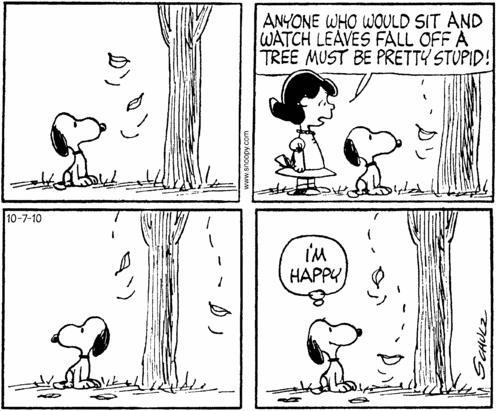
Peanuts by Charles Schulz
Dedication.
May everyone everywhere experience ever expanding happiness by increasingly living moment by moment in precious presence, with ever quieter minds.
Thereby may we all radiate love and joy, which blesses the world, ever NOW.
And so shall it be!
Ron Rattner
Tuned Out, to Tune In –
Being in the world, but not of the world
“That which is timeless is found now.”
~ Buddha
“Life can be found only in the present moment.
The past is gone, the future is not yet here,
and if we do not go back to ourselves in the present moment,
we cannot be in touch with life.”
~ Thich Nhat Hanh
Tao and Zen
are NOW,
not then.
~ Ron Rattner, Sutra Sayings
“Fools follow the desires of the flesh
and fall into the snare of all-encompassing death;
but the wise, knowing the Self as eternal,
seek not the things that pass away”
~ Katha Upanishad 2:1:2
“Happiness resides not in possessions, and not in gold;
happiness dwells in the soul.”
~ Democritus
“Wealth consists not in having great possessions,
but in having few wants.”
~ Epictetus
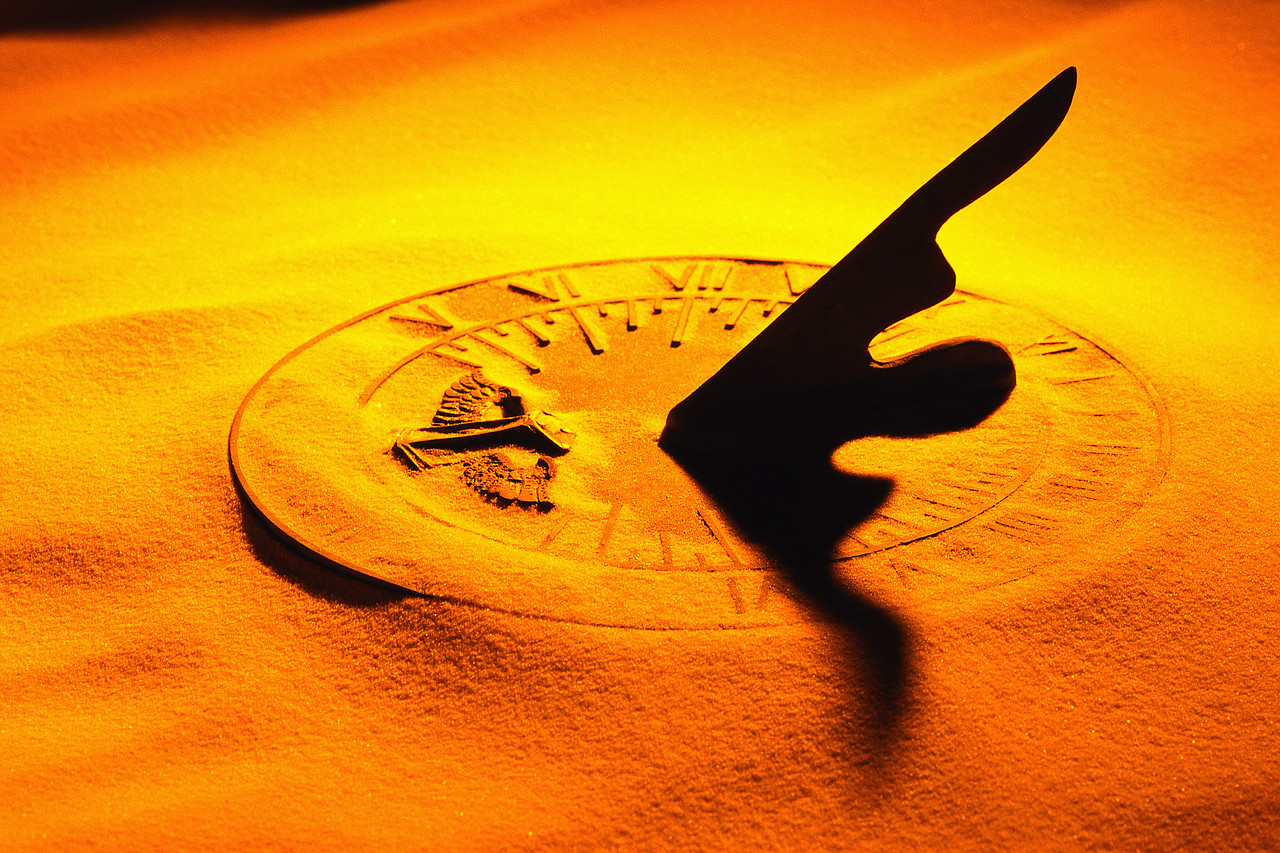
Tuned Out, to Tune In
I’ve temporarily tuned
out of temporality,
And tuned in to timelessness.
And an inner voice says silently:
Now it’s time to live
in timeless temporality –
In the world,
but not of the world –
NOW.
Ron’s audio recitation of “Tuned Out, to Tune In”
Ron’s explanation of “Tuned Out, to Tune In”
Dear Friends,
The above whimsical poem, “Tuned Out, to Tune In”, is about living timelessly in time, and thus being in the world but not of the world – a spiritually significant state.
Spiritual teachings often stress importance of living compassionately in the timeless NOW, while dispassionately letting go of ego attachments to constantly changing outcomes and occurrences.
Yogis and mystics in other times have attained and maintained elevated states of detached awareness by taking refuge in forests, on mountains, or in caves. But such stress-free environments or circumstances are now increasingly rare in wealthy materialist societies. Spiritual aspirants living in crowded and polluted urban environments are especially challenged to maintain such mindfulness, while acting skillfully and compassionately in this turbulent age of mental malaise, rife with suffering of most life forms on our precious planet.
Today’s whimsical verses were composed years ago, after I’d begun wondering about how to best live timelessly in time, in the world but not of the world.
Initially I was inspired by Jesus’ teachings to abjure earthly treasures and pleasures, but seek treasures of heaven. (See https://sillysutras.com/seek-more-than-meets-the-eye/) Thereafter, Hindu teachings about vairagya (dispassion), and Buddhist scriptures about avoiding attachments were influential.
And by observing the compassion with dispassion of my beloved Guruji, Shri Dhyanyogi Madhusudandas, and other spiritual masters (like the Dalai Lama), I gleaned great inspiration.
Thus, gradually I learned that with stilled minds and opened hearts it’s possible for us to psychologically transcend ego-mind attachments to outcomes of ever impermanent and uncertain worldly happenings, even though we have deep concerns about social injustice and suffering. And I have long aspired to attain such a skilled spiritual state.
Living dispassionately, skillfully and sanely in our stressful culture is an evolutionary challenge for all of us. So, “Tuned Out, to Tune In” has been posted today to encourage us to live more and more in the timeless present, yet to follow our heart while dispassionately letting go of ego-mind’s attachments to constantly changing outcomes.
May we thereby bless all Life by compassionately and dispassionately being in the world but not of the world, while letting go of ego.
And so may it be!
Ron Rattner
Truth is Everywhere/ Nowhere/ NOW!
“Truth is a pathless land.”
~ J.Krishnamurti
“I am the Way, and the Truth, and the Life”
~ John 14:6
“The way is not in the sky. The way is in the heart.”
~ Buddha
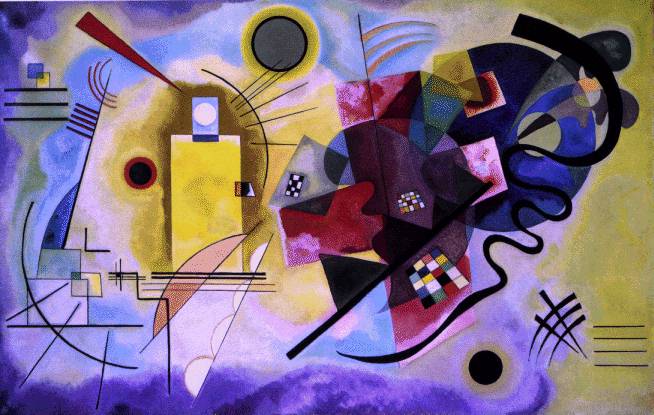
Kandinsky, “Yellow, Red, Blue”
Truth is Everywhere/ Nowhere/ NOW!
Truth is pathless.
Truth is mindless.
Truth is wordless.
Truth is timeless.
Truth is everywhere and nowhere –
NOW.
To know truth,
be Truth.
To know life,
be Life.
To know the way,
be the Way.
NOW!
Ron’s audio recitation of “Truth is Everywhere/ Nowhere/ NOW!”.
Ron’s 2018 comments about “Truth is Everywhere/ Nowhere/ NOW!”.
Dear Friends,
Knowingly or unknowingly, everyone seeks spiritual Truth – realization that we are “the Way, and the Truth, and the Life.”
But in this troubled and tumultuous Trump era, rather than seeking eternal Truth, many people are impelled to pursue worldly political activities aimed at addressing current global insanity fomented by psychopathic oligopolist world “leaders”.
Concerned citizens worldwide justifiably perceive urgent need to avert apparently imminent nuclear or ecologic catastrophe, and other insane threats to earth life as we have known it.
But rather than deterring our pursuit of spiritual Truth, our determined nonviolent political actions to avert worldwide disaster can help further spiritual evolution. We need only follow the visionary truth-seeking path of Mahatma Gandhi, whose extraordinary life and nonviolence legacy have immeasurably blessed our world and inspired countless others.
Gandhi was a deeply spiritual man who often equated ”Truth” with “God” and who was influenced by teachings of Jesus, writings of Tolstoy, and Thoreau’s famous essay, “Civil Disobedience”. So he called his nonviolence movement (which began on September 11, 1906) “satyagraha”, a Sanskrit neologism he coined meaning the “relentless pursuit of Truth”.
Thus, Gandhi’s satyagraha movement was not just political, but encompassed relentless pursuit of spiritual Truth through the practice of active, faith-based nonviolence.
To help remind us that the deep meaning of Humankind’s search for Truth, includes political pursuit of peace and justice as well as the spiritual search for God or Self, I have posted the foregoing “Truth is Everywhere/ Nowhere/ NOW! ” poem and quotations from Jesus, Buddha and J. Krishnamurti.
Today’s poem was composed many years ago during an extended post-retirement reclusive period when I could not begin to imagine the extraordinary dystopian insanity of the current Trump era. Yet, I am now sharing it because its perennial Truth message remains especially relevant in these crazy times.
May it help bring us at long last to an era of worldwide peace and goodwill, as we realize that we are the Way and the Truth and the Life – not in the sky, but in the sole Sacred Heart of Humanity.
And may abiding Gandhian political/spiritual “satyagraha” impel current world political “leaders” to join democratically with their peace seeking citizens everywhere in nonviolent relentless pursuit of Truth, ending insane violence, injustice and oppression now rife on our precious planet.
And so shall it be!
Ron Rattner
A Precious Human Life ~ H.H. The 14th Dalai Lama
“The first preliminary practice consists of recognizing and giving value in its right measure to the precious human existence and the extraordinary opportunity that it gives to us to practice Dharma and to develop spiritually.”
~ Kalu Rinpoche – Foundations of Tibetan Buddhism
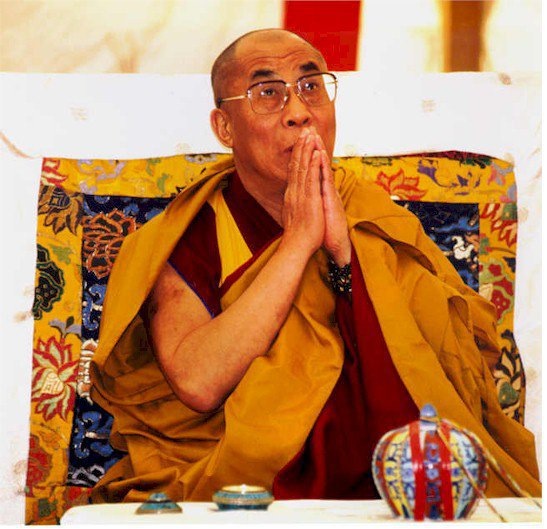
A Precious Human Life
“Everyday, think as you wake up:
Today I am fortunate to have woken up,
I am alive,
I have a precious human life,
I am not going to waste it,
I am going to use all my energies to develop myself.
To expand my heart out to others,
To achieve enlightenment for the benefit of all beings,
I am going to have kind thoughts towards others,
I am not going to get angry, or think badly about others.
I am going to benefit others as much as I can.”
~ H.H. The 14th Dalai Lama
Ron’s Dedication and Comments about “A Precious Human Life”
Dear Friends,
Today is the 83rd birthday anniversary of His Holiness The 14th Dalai Lama of Tibet. In honor of His Holiness, and as a special blessing for all who read his deeply inspiring words, I am privileged to share online His Holiness’s above advice about how we should greet and live each day with mindfulness of our fleeting precious human life.
Before my spiritual awakening, like most other people, I never thought about being a human, rather than some other life-form. But after meeting my Guruji, Shri Dhyanyogi Madhusundandas, I learned that Eastern spiritual paths identify human incarnation on planet Earth as an extraordinarily precious opportunity to evolve – beyond that of any other life-form; that Buddhist and Hindu teachings say that for spiritual evolution it is better to be born human than even in a heavenly realm.
Tibetan Buddhist teachings especially helped me realize that human birth is amazingly precious and rare. They persuaded me that, although the not yet experienced effects of mysterious karmic causes and conditions result in unavoidable rebirths, there is no guarantee that we will evolve on rebirth; that we obtain human bodies because of good deeds in former lives, but that without living compassionately and mindfully, with continuing determination to transcend selfish behaviors, we squander an extraordinarily rare chance to evolve spiritually.
In October 1982, in San Francisco, I participated together with hundreds of others in a Kalachakra empowerment given by (now deceased) Tibetan master Kalu Rinpoche. In describing the history and rare significance of that ceremony, Lama Kalu explained that our attendance arose from beneficial causes and conditions so mysteriously and statistically rare as to be well beyond ordinary human comprehension – like Jesus’ metaphor of a camel passing through the eye of a needle. For example, Rinpoche explained that according to the Buddha, obtaining a human birth and following truth teachings is as unlikely as it is for a blind turtle to put its head through a single yoke which is cast on the oceans of this world.
These Tibetan Buddhist Kalachakra teachings deeply impressed upon me the extraordinary preciousness of fleeting human birth, and the utmost importance of our honoring it by living skillfully and mindfully to evolve spiritually.
So I feel especially privileged to share the foregoing crucially important advice from the H.H. Dalai Lama, our contemporary world’s most renowned exemplar of Buddhist teachings.
May these deeply profound teachings inspire us to gratefully and constantly honor our precious human lives by ever expanding our heart of compassion for the benefit of all beings.
And so shall it be!
Ron Rattner
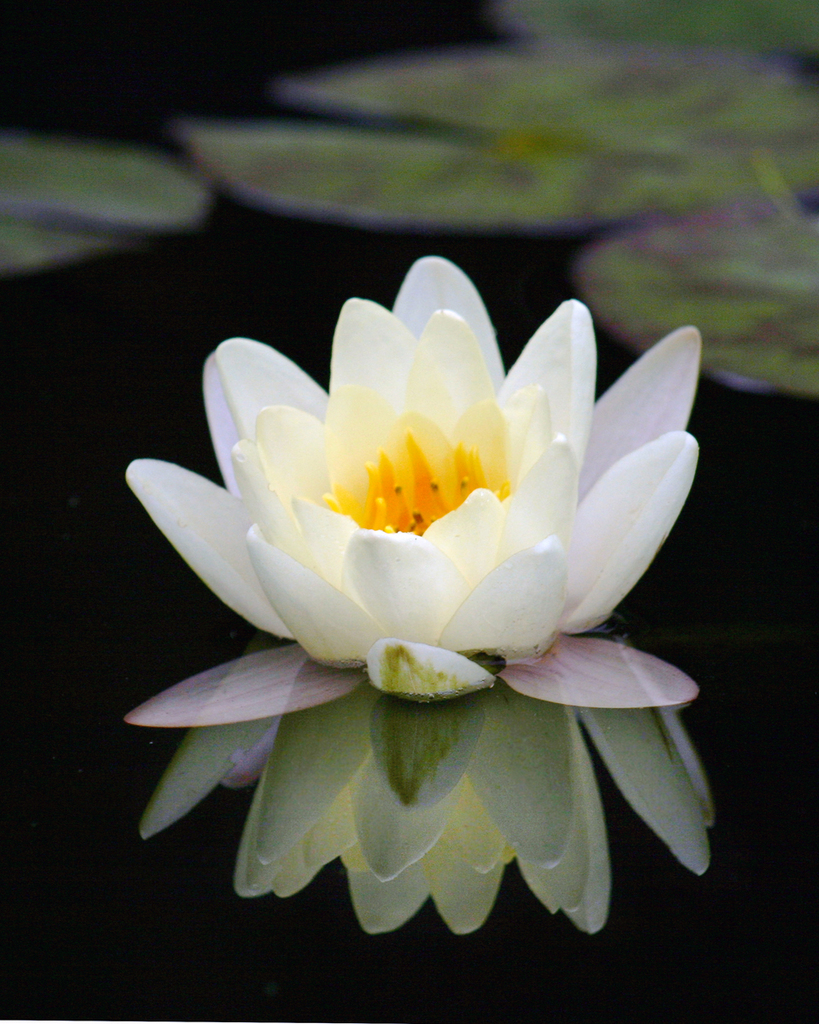
Who’s a Who, and Who are You?
“A person’s a person, no matter how small.”
~ Dr. Seuss

Horton Hears a Who
“[Self] Realization is of the fact that you are not a person.”
“You are THAT!”
~ Nisargadatta Maharaj
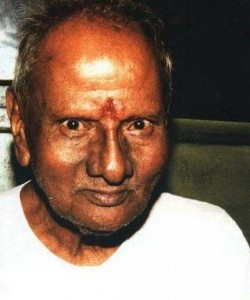
Shri Nisargadatta Maharaj
Who’s a Who, and Who are You?
Q. If “A person’s a person, no matter how small”,
and a person’s a person, though tiny or tall,When is a person no person at all?
A. A person’s no person, whether tiny or tall,
when s(he) doesn’t think s(he)’s a “person” –
any person at all.
Q. Doesn’t everyone think they’re a “person” –
whether tiny or tall;Does anyone think they’re no person at all?
A. Nobody thinks that they’re anyone – tiny or tall,
when they don’t think anything – anything at all.
Q. But when they’re not thinking,
who are they?
And who am I? And who are you?
A. To realize that we must stop thinking,too!
Ron’s comments and recitation of “Who’s a Who, and Who are You?”
Ron’s explanation of “Who’s a Who, and Who are You?”
Dear Friends,
Since launching the Silly Sutras website I have posted many writings – aphorisms, quotations, poems and essays – about Eastern non-dualism philosophy, which I accept as highest spiritual teachings. Paradoxically these writings point to an ultimate Truth which cannot be expressed in words, but only suggested silently – like the Buddha pointing to the moon.
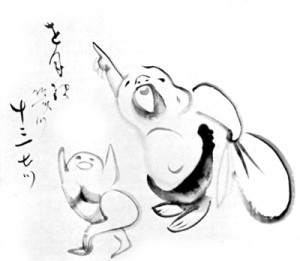
Thus, sometimes we may best communicate wordlessly with silent gestures, pantomime, looks or tears; or auditorily with laughter, tunes, or music.
With words, Truth is sometimes best expressed with jest – whimsically, humorously or paradoxically.
The foregoing poem “Who’s a Who, and Who are You?” was composed to both whimsically and paradoxically point to ineffable Absolute non-duality Reality.
Einstein told us that our space/time duality reality is a persistent mental illusion – a way of thinking. Similarly, for millennia mystical inner explorers have revealed the ever illusionary nature of our impermanent relative ‘reality’ – calling it (in Sanskrit) “maya” or “samsara” – which the Buddha likened to a mental mirage.
In sutra sayings I have paradoxically proclaimed that:
“Reality isn’t REAL!”
that it is just a mental movie – a holographically, fractally, and kaleidoscopically projected ‘theater of the mind’.
In composing “Who’s a Who, and Who are You?” I have attempted to express paradoxically and whimsically how Dr. Seuss might point from space/time to Ultimate non-duality Reality.
I hope we can get the ‘point’; or at least begin to wonder what it means.
And so may it be!
Indian Spirituality Principles*
“On a long journey of human life,
faith is the best of companions;
it is the best refreshment on the journey;
and it is the greatest property.”
~ Buddha
“Faith is the highest passion in a human being.
Many in every generation may not come that far,
but none comes further.”
~ Soren Kierkegaard
“I tell you the truth,
if you have faith as small as a mustard seed,
you can say to this mountain,
“Move from here to there” and it will move.”
~ Matthew 17:20
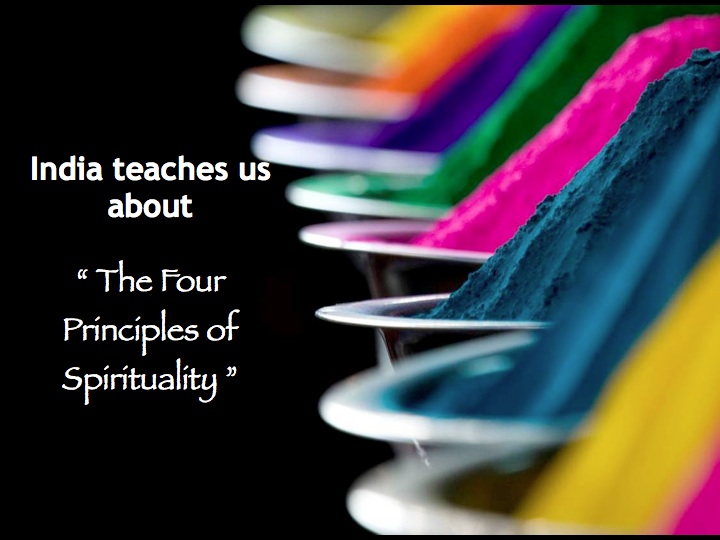
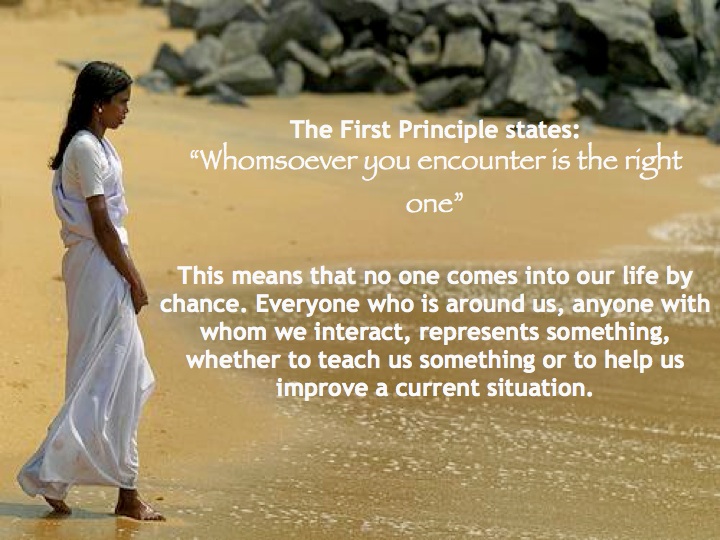
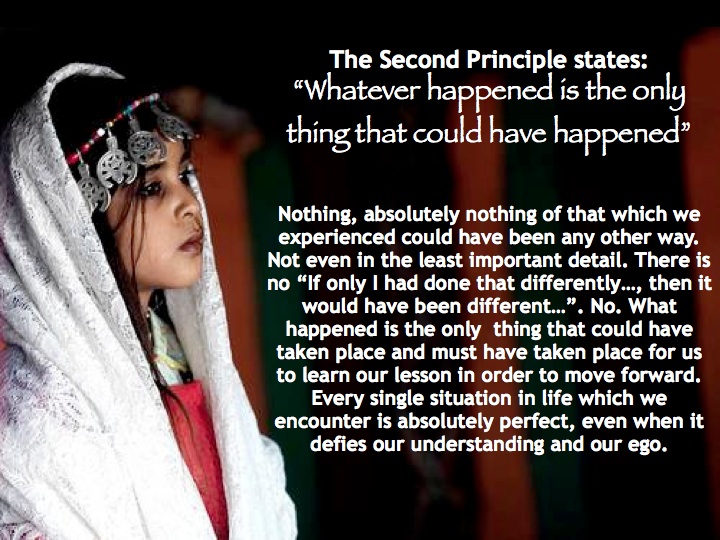
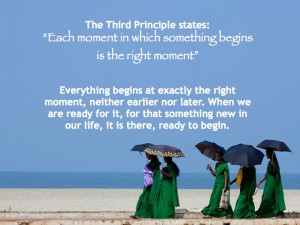
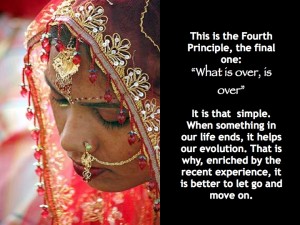


Ron’s hints for happiness:
Even if it’s difficult for you to believe these spiritual principles, your life will be happier if you live as if they were true, with faith and love. Whether or not you believe in spiritual evolution or predestiny, just pretend that everything in your life is happening for the best, in the best way and at the best time. And accept difficulties as evolutionary opportunities, without remorse or regret about the past or worry or fear of the future. Sow love, harvest happiness.
Downloadable pdf file: IndianSpirituality
* Source and author are unknown
Ron’s Optimism Commentary:
Dear Friends,
Today I share the above simply written but possibly profound article – by an anonymous author – titled “Indian Spirituality Principles”, preceded by quotes about faith. Please reflect on their message.
The article says that there are no coincidences or accidents in our lives; that everyone we encounter and everything that happens or doesn’t happen to us, can help us learn to live happier lives.
From long life experience, I have gratefully and joyfully discovered that our earth life in precious human bodies is a rare and immense evolutionary opportunity for us to advance – individually and societally – toward realization of unlimited human and spiritual potentialities.
With boundless and abiding faith that our lives are completely enveloped, controlled and guided by Divine LOVE, beyond human comprehension, imagination or description, I have realized that we are Eternal spirit incarnate with nothing to fear but fear itself. [ see e.g. I’ve Found A Faith-Based Life ]
Though it may be difficult for us to accept principles of spiritual evolution or pre-destiny, I respectfully suggest our lives will be happier if we live as if they are true.
So with faith and love let us assume that everything in our lives is happening for the best, in the best way and at the best time; so that – like philosopher Gottfried Leibniz (and unlike Voltaire and “Candide”) – we may accept difficulties as evolutionary opportunities, without remorse or regret about the past, or worry or fear of the future.
Thereby we will optimistically sow love, and inevitably harvest happiness in ‘the best of all possible worlds’.
And so it may it be!
Ron Rattner
“Choice” Quotations
“We must believe in free will,
we have no choice.”
~ Isaac Bashevis Singer
“There is no such thing as chance;
and what seems to us merest accident
springs from the deepest source of destiny.”
~ Friedrich Schiller
“Since we cannot change reality,
let us change the eyes which see reality.”
~ Nikos Kazantzakis
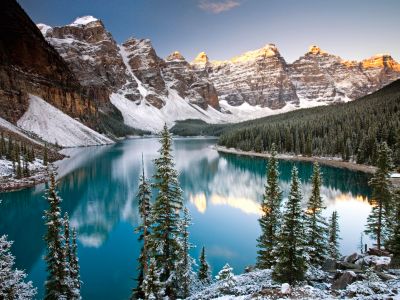
“Choice” Quotations
“Human beings, vegetables, or cosmic dust –
we all dance to a mysterious tune,
intoned in the distance by an invisible piper.”
~ Albert Einstein
“What really interests me is whether God had any Choice in the creation of the world.”
~ Albert Einstein
“We choose our joys and sorrows long before we experience them.”
~ Kahlil Gibran
“Inflamed by greed, incensed by hate, confused by delusion, overcome by them, obsessed by mind, a man chooses for his own affliction, for others’ affliction, for the affliction of both and experiences pain and grief”
~ Buddha
“Life is the sum of all your choices.”
~ Albert Camus
“When you have to make a choice and don’t make it,
that is in itself a choice.”
~ William James
“God offers to every mind its choice between truth and repose.
Take which you please – you can never have both.”
~ Ralph Waldo Emerson
“What we call the secret of happiness is no more a secret than our willingness to choose life.”
~ Leo Buscaglia
“I can elect to change all thoughts that hurt.”
~ A Course In Miracles
“Everything can be taken away from a man but one thing:
the last of the human freedom — to choose one’s attitude in any given set of circumstances, to choose one’s own way.”
~ Viktor Frankl
“I have set before you life and death, blessing and cursing.
Therefore choose life.”
~ Deuteronomy 30:19
“Everyone should carefully observe which way his heart draws him, and then choose that way with all his strength. ”
~ Hasidic Saying
Meeting Tibetan Buddhists ~ Ron’s Memoirs
“The first preliminary practice consists of recognizing and giving value in its right measure to the precious human existence and the extraordinary opportunity that it gives to us to practice Dharma and to develop spiritually.”
~ Kalu Rinpoche – Foundations of Tibetan Buddhism
“[T]he reality of the world today is that grounding ethics in religion is no longer adequate. This is why I believe the time has come to find a way of thinking about spirituality and ethics that is beyond religion.”
~ H.H. the Dalai Lama – Beyond Religion: Ethics for a Whole World
“In the present circumstances, no one can afford to assume that someone else will solve their problems. Every individual has a responsibility to help guide our global family in the right direction. Good wishes are not sufficient; we must become actively engaged.”
~ His Holiness the Dalai Lama, from “The Path to Tranquility: Daily Wisdom”
![Ven. Kalu Rinpoche [1905—1989]](https://sillysutras.com/wp-content/uploads/Kalu-Rinpoche_0001-642x1024.jpeg)
Ven. Kalu Rinpoche [1905—1989]
Introduction. I have been blessed by meeting and learning from many spiritual teachers, in addition to my beloved Guruji, Shri Dhyanyogi Madhusudandas. Especially inspiring and helpful have been certain Tibetan Buddhist teachers.
Soon after my mid-life spiritual awakening, I was first exposed to Buddhist teachings via radio. For many years, I regularly listened to masterful New Dimensions Radio interviews by Michael Toms of spiritual teachers and authors, often Buddhists. And on Sunday nights, while driving home from visiting my parents, I regularly heard on KPFA recorded talks by Buddhist teacher, Alan Watts, a brilliantly insightful and articulate former Episcopal priest who had ‘converted’ to Zen Buddhism and moved from the UK to Marin County, California. Also for a short time I attended Sunday morning dharma talks and Zazen meditations at the beautiful and bucolic Green Gulch Zen Center in Marin County.
After my 1978 shaktipat initiation by Guruji I mostly focussed on Hindu spiritual teachings. But I remained curious about other spiritual and mystical traditions, especially non-duality teachings which I found not only in Advaita Vedanta, but also in Buddhism, Taoism and Sufism. (Ultimately, beyond religion, I became most focussed on certain universal wisdom principles at the heart of all enduring spiritual, religious, philosophical and ethical paths – like the “Golden Rule”. And to further those teachings I established The Perennial Wisdom Foundation.)
During a 1979 apparent ‘near death’ experience, I had visions of ethereal, luminescent and intricate mandalas – like those associated with Vajrayana Buddhism – which sparked much curiosity about Tibetan Buddhists and their mandalas. Soon afterwards I was synchronistically blessed with darshan of Tibetan lamas who in diaspora had started coming to the West. Most important for me were H.H. the Dalai Lama – who remains a living inspiration for me, and Kalu Rinpoche, a very venerable Tibetan Buddhist meditation master, now deceased and reborn.
For over thirty years I have been deeply inspired by core Buddhist teachings, as practiced by the Tibetans, though I never became a practicing Buddhist. In the 1980’s I honored that inspiration by receiving refuge and taking Boddhisattva vows from Kalu Rinpoche, and by receiving empowerments and teachings from both Kalu Rinpoche and the Dalai Lama, as well as other Tibetan lamas.
Taking Refuge. After meeting Kalu Rinpoche, I soon took refuge from him in the three jewels of Buddhism – the Buddha, sangha and dharma. In a brief refuge ceremony with this great yogi, I thereby symbolically committed to honor the Buddha – as my own true nature – and those teachings and communities which would advance realization of that Buddha nature.
Boddhisattva vows. Shortly after taking refuge I was inspired to take Boddhisattva vows from Kalu Rinpoche to altruistically help all sentient beings end their sufferings.
In taking these vows I was deeply inspired by this selfless Tibetan Buddhist ideal exemplified by the Dalai Lama, Kalu Rinpoche and many other Lamas. Never content with only their own spiritual evolution and salvation, Buddhist Boddhisattvas postpone their own ‘nirvana’ choosing to take continuing rebirths in order to serve humanity until every sentient being has been helped to liberation. For example, His Holiness the 14th Dalai Lama, is latest in a long line of Boddhisattva Dalai Lamas, believed to be manifestations of Avalokiteshvara or Chenrezig, the Bodhisattva of Compassion and the patron saint of Tibet.
Taking Boddhisattva vows symbolically marked an important transition from my prior aspiration to escape through spiritual “enlightenment” from this world of inevitable suffering. Rather than yearning to leave this crazy world forever, I took those vows aspiring to stay here in ways which might help all life everywhere, as I continued to observe and clear my own mental defilements.
Enlightenment as a Process. After taking these Buddhist vows, I didn’t expect an early departure from space/time causality reality. Instead, influenced by Buddha’s teachings that conditioned existence (samsara) has been going on for so long that all beings may have been each other’s parents in some lifetime, I began regarding “enlightenment” as a virtually endless evolutionary process in which – except for Buddhas and Boddhisattvas – we unwittingly participate for eons.
The Tibetan Tulku Tradition. Tulkus are emanations of those who retain spiritual consciousness and continuity through successive births. Except perhaps for rare Buddhas and very evolved beings, on rebirth almost everyone experiences ‘instant amnesia’ about conscious details of other lifetimes and prior spiritual learning, which details remain in our subconscious memory. The Tibetan Tulku tradition, aims to facilitate fulfillment of boddhisattva vows by locating reborn Lamas at an early age and training them from childhood to rekindle their consciousness of Buddhist teachings and practices. Tibetans have elaborate tests to prove that newly reborn Tulkus are truly who the waiting elders think they are, such as checking whether the child can recognize acquaintances or possessions from his previous life or answer questions only known to his former life-experience. For example, this process is portrayed in Kundun, the classic biographical film about the Dalai Lama. Some rare Tibetans (like the Karmapa) are able to foretell before dying where they will consciously take rebirth.
Karma. The Tibetans’ Tulku tradition is inextricably intertwined with their teachings about karma, rebirth, and Boddhisattvas. Although virtually all mystical traditions accept karma, afterlife and reincarnation, the Tibetan Buddhists’ karma and rebirth teachings and their Boddhisattva traditions especially helped me enhance identification with spirit while diminishing my psychological fear of bodily death.
According to Eastern philosophies, Karma is universal law of cause and effect applied at subtle levels to everything we think, do or say during repeated rebirths as supposedly separate beings. A similar concept is implicit in Western teachings that we reap as we sow. [Galatians 6:7-9]
As long as we self-identify as subjects separate from supposed objects of our choice or intention, our exercise of supposed free will creates karmic causes and conditions. Buddhism teaches that karma means “volitional action.” Any thought, word or deed conditioned by samsaric illusion – for example, defilements like desire, hate, or passion – creates karma. On death, the unexperienced effects of karmic causes, result in unavoidable rebirths.
What is reborn? “Reincarnation” is commonly understood to be the transmigration of a “soul” – viz. apparently circumcised spirit – to another body after physical death. But in Buddhism there is no concept of separate soul or individual self that survives death. Yet Buddhists believe in rebirth.
So, what do Buddhists say is reborn to experience karmic causes and conditions, or to fulfill Boddhisattva vows? I will simplistically and metaphorically share my understanding.
I was once told by Swami Sivananda Radha that during a private audience with the Dalai Lama she asked, “In view of Buddhist teaching that there is no separate self or soul, what reincarnates?” And His Holiness replied: “An energy vortex.”
The Dalai Lama’s explanation that an “energy vortex” is what incarnates was consistent with Western science. Since Einstein’s groundbreaking theory of relativity, quantum physicists have confirmed that in this world of space/time and causality everything is energy – every impermanent form and phenomenon, whether or not perceptible or measurable.
And for millennia seers and mystics have revealed that subtle mental energy bodies associated with physical bodies survive death of those physical bodies. Just as computers need an operating system to function, so do physical bodies. Like computers which operate via software, physical bodies are controlled by subtle mind-stuff energies (chitta). And when – like computers – physical bodies inevitably deteriorate and die, their mental software survives, and is reusable.
Thus, just as I am able to use with my new iMac the same OS X software system that operated my old iMac, I can (and may for eons) operate other physical bodies with the same mind-stuff energy that is animating this one. And those other physical bodies which will be using my pre-existing mental software, will probably display many of the same ‘operating features’ as my prior physical bodies. These mental operating systems can be gradually ‘up-dated’. But this usually requires a very slow process of intentional self-discovery and removal of mental obscurations and defilements.
Precious human birth. Before my spiritual awakening, like most other people, I never thought about being human, rather than some other life-form. But after meeting Guruji, I learned that Eastern spiritual paths identify human incarnation as an extraordinarily precious opportunity to evolve – beyond that of any other life-form; that Buddhist and Hindu teachings say that for evolution it is better to be born human than even in a heavenly realm.
Tibetan Buddhist teachings especially helped me realize that human birth is extraordinarily precious and rare. They persuaded me that although the unexperienced effects of karmic causes result in unavoidable rebirths, there is no guarantee that we will evolve on rebirths; that we obtain human bodies because of good deeds in former lives, but that without living compassionately and mindfully with continuing determination to transcend selfish behaviors we squander a rare chance to evolve spiritually.
In October 1982, in San Francisco, I participated together with hundreds of others in a Kalachakra empowerment given by Kalu Rinpoche. In describing the history and rare significance of that ceremony, Lama Kalu explained that our attendance arose from beneficial causes and conditions so mysteriously and statistically rare as to be well beyond ordinary human comprehension – like Jesus’ metaphor of a camel passing through the eye of a needle. For example, according to the Buddha, obtaining a human birth and following truth teachings is as unlikely as it is for a blind turtle to put its head through a single yoke which is cast on the oceans of this world.
In all events, Kalu’s teaching deeply impressed me with the preciousness and impermanence of human birth, and the importance of using it to evolve spiritually.
More memorable experiences with Kalu Rinpoche. Before receiving the Kalachakra empowerment, in 1982 I attended a public talk by Kalu Rinpoche at Fort Mason, San Francisco, about the Mahamudra experience, which he described (through an interpreter) as the quintessence of all Buddhadharma. Though I didn’t understand much of what was said, I intuited that I was in the presence of a great meditation master – like Guruji.
After talking about Mahamudra, Lama Kalu said that to help us understand Mahamudra experience he would give us a brief demonstration of that state of being. Whereupon, with ‘miraculous’ mind-power, he dramatically transformed the energy in that small lecture room. Suddenly my mind went completely still and I experienced a rare state of peace and oneness beyond comprehension or expression. By Kalu Rinpoche’s immense power as a meditation master, he briefly but unforgettably shared with us a glimpse of his rare and exalted state of clear mind.
A few years later, circa 1986-7, I had another memorable experience of Kalu Rinpoche’s powerful presence. Together with my daughter, Jessica, and friends Mark and Marsha Newman, I attended a public talk by him at the San Francisco Unitarian Universalist Church, one of the city’s largest religious sanctuaries. After waiting in a long line for some time, we managed to be seated in pews near the very back of the church.
Just as Kalu Rinpoche had ‘magically’ transformed the energy in the small lecture room where I heard him describe the Mahamudra experience, the energy ambience in that entire large church was palpably transformed upon his appearance at the pulpit. My daughter Jessica, had never before experienced such a spiritually powerful presence and was deeply impressed. Afterwards, she posted a picture of Kalu Rinpoche in her room, and though she never again saw him she was emotionally affected and cried on news of Kalu’s death in May, 1989.
After seeing Kalu Rinpoche at the Unitarian Church, I saw him again when he was interviewed by Michael Toms at the New Dimensions San Francisco radio studio. On his arrival at the studio he was introduced to staff and to me (as a New Dimensions director). Whereupon he came up to each one of us and humbly introduced himself with a friendly handshake. At that gesture, I was impressed with that great yogi’s humility – like Guruji’s. Later I was inspired to observe that: “The more we know we’re no one, the more we’re seen as someone”.
Learning to keep faith despite disillusionment. After many years of questioning, I have found a faith based life – beyond beliefs, dogmas, theologies or personalities. I was very much helped and encouraged in this process by another important and synchronistic encounter with Kalu Rinpoche, at a time of great disillusionment in my life,.
In the 1980’s after Guruji’s return to India I learned with shock that certain private behavior of a spiritual teacher (other than Guruji) with whom I had a close relationship was significantly inconsistent with his teachings and outer image. Though by this time, I knew of numerous instances in which well known spiritual teachers were credibly shown to be flawed humans, like the rest of us. But this was the first time that it happened with a teacher with whom I felt a close rapport and had spent much time. And I was emotionally upset and confused.
Whereupon, I learned that Kalu Rinpoche would be appearing for a morning talk and darshan at Kagyu Droden Kunchab a San Francisco Center dedicated to the ultimate benefit of all sentient beings, which he founded; that his Buddhist teachings would be followed by a question and answer session. I desperately wanted Kalu’s guidance about my crisis of faith. But I had to be in court that morning. So dressed in suit and tie, I came to the darshan with very limited time to spend there.
By the time that Kalu ended his talk, I had only thirty minutes left before needing to leave for court. Whereupon the translator announced that Rinpoche would now entertain questions, and virtually everyone in the room – including me – raised a hand for recognition. ‘Miraculously’ Kalu beckoned first to me to ask my question, which was:
“What is the proper attitude of a student on discovery of a teacher’s behaviors inconsistent with the teachings?”
Whereupon Lama Kalu gave an extremely wise and helpful thirty minute dissertation in response to my inquiry. As soon as he finished and began answering the next question, I was obliged to leave for court. I cannot recount details of what Kalu said, but the unforgettable essence of his answer was:
“Never lose faith in the teachings, even if you lose faith in the teacher.”
Only after years of introspection and more instances of disillusionment with teachers and others upon whom I had mistakenly projected flawless ethics, was I able to fully grasp Kalu’s wise teaching. During that process, I decided that “incarnation is limitation”; that no one is infallible; and, that “it is better to live the teachings, and not teach them, than to teach the teachings and not live them”.
A few years after my last face to face encounter with Lama Kalu, I was memorably reminded of his meditation mastery and his message of faith. On a beautiful week-end day while hiking in the forested higher elevations of Point Reyes National Sea Shore nature reserve, I decided to sit on a rock from which I enjoyed a panoramic view out into the ocean. As I beheld that inspiring nature scene in a meditative mood, Lama Kalu Rinpoche’s smiling visage fleetingly appeared in my inner vision. We never again met in this life, but I shall remain ever grateful for his blessings. With his encouragement I have never lost faith in this precious human life and in the infinite opportunities it affords us.
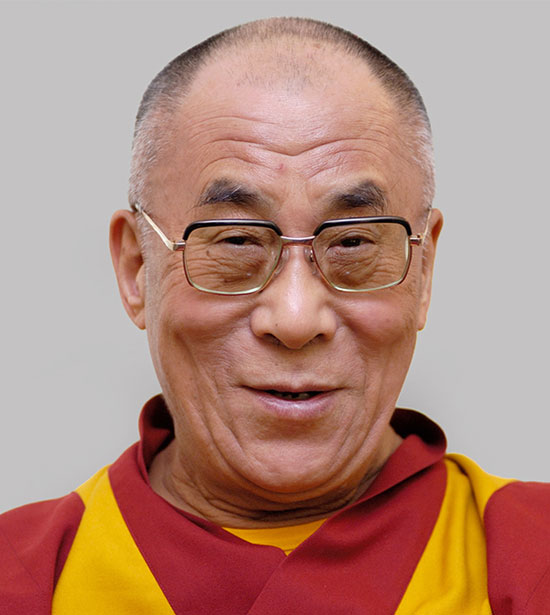
H. H. The 14th Dalai Lama, Tenzin Gyatso.
His Holiness The 14th Dalai Lama, Tenzin Gyatso.
Of all prominent living people, I am most inspired by H.H. the Dalai Lama – the spiritual leader (and former political leader) of Tibet. Apart from his Holiness’s spiritual attainments, which are beyond my comprehension, I am especially inspired by his universal compassion, wisdom, humility and humor.
I see him as a living exemplar of human potential – a Boddhisattva helping countless sentient beings and all life on our precious planet in infinite ways beyond religion or politics. Although my encounters with His Holiness have been impersonal – only as part of large audiences or via videos or writings – I feel a deep connection and harmony with him as a revered fellow human being.
Ever since an October, 1989 darshan, I have wondered whether that harmonious connection began in other lifetimes. At that time, I had the good fortune of being one of a limited number of people privileged to attend a ceremony to be conducted by His Holiness atop sacred Mount Tamalpais in Marin County, in a natural outdoor amphitheater. Because of limited highway access, the Dalai Lama was scheduled to arrive by helicopter. But his flight was delayed, and so we awaited his arrival.
Instead of waiting in the amphitheater, I decided to meditate in a nearby nature place. Then, on contemplating the Dalai Lama I experienced such heartfelt affinity and reverence, that I began an intense and protracted devotional crying jag. I became so overwhelmed with emotion of devotion that I was unable to stop weeping and enter the amphitheater even when I heard the sounds of the helicopter’s arrival. Ultimately, a compassionate Buddhist woman, who on her arrival had observed me crying, came out and taking me by the hand led me, still weeping, into the amphitheater.
The Dalai Lama is the only Tibetan teacher, including Kalu Rinpoche, with whom I have continuously felt such a deep devotional rapport – like my rapport with Guruji. He is regarded by Tibetans as the Bodhisattva of Compassion, and perhaps it is this subtle energy which opens my heart. In all events, though I don’t yet remember another life as a Tibetan, I intuit an important karmic connection with His Holiness, and regard him as a role model for living an ethical and compassionate life, regardless of our religious or cultural history.
Here are some of the ways in which I have been inspired by the Dalai Lama’s life and teachings:
Compassion. In his ever inspiring deportment, talks, and writings, His Holiness manifests and emphasizes the crucial importance of compassionate behavior – even with enemies. Drawing great inspiration from him, I have gradually come to regard everyone I meet – including those with whom I have disagreements – as spiritual siblings – brothers or sisters all sharing the same aspirations for happiness and peace of mind, despite superficial cultural differences. And, despite my pronounced lawyer’s tendencies to combatively judge all adversaries, more and more I have even found compassion for those whose ignorance of their true spiritual identity leads them to egregiously harmful behaviors. For example, at a time when I considered former US President George Bush, Jr., a war criminal and mass murderer, His Holiness publicly described him as “a nice man.” Hopefully, he privately influenced Bush – with whom he shares the same July 6th birthdate – to adopt more compassionate ethics.
Humility. His Holiness is regarded by Tibetans and by many others as a living Buddha. For, example, a Tibetan emigre attending a Tibetan Losar new year ceremony conducted in Minneapolis by His Holiness told a newspaper reporter there that “for Tibetans in exile, seeing the Dalai Lama is akin to Christians getting to meet Jesus”. Moreover, especially since his nomination for the Nobel Peace prize, His Holiness has become like a world-wide rockstar celebrity, attracting capacity audiences for all public appearances. Yet he remains exceptionally humble, describing himself as “a simple Buddhist monk” and member of the Human family. Despite his renown as a living sage, I have heard him several times answering questions with “I don’t know”. In my experience, this is very rare behavior for an elevated Eastern spiritual teacher. For example, I have never heard of any such humble response from elevated Hindu teachers regarded as avatars or ‘god-men’. I was especially drawn to Guruji who (despite his Hindu acculturation) was exceptionally humble, and even told my friend Joy Massa: “follow your heart, even if it contradicts my words”.
I have always felt ambivalent about spiritual teachers who pontificate as if they are infallible. For me, such behavior encourages adulation over inspiration. And I am uncomfortable with any spiritual group or tradition emphasizing adulation of the incarnate over adoration of the Infinite.
In my opinion, selfless humility is a supreme virtue. It is especially rare in prominent people who are subject to great flattery, praise and adulation, which can easily entice and inflate ego, the enemy of compassion and humility. Those like the Dalai Lama, Guruji, Gandhi and Einstein, who have resisted such ego temptations I consider inspiring great beings.
Universal morality and ethics beyond religion. In public talks and in his recently published book “Beyond Religion: Ethics for a Whole World” His Holiness explains how inner values “are the source of both an ethically harmonious world and the individual peace of mind, confidence and happiness we all seek”, concluding that “the time has come to find a way of thinking about spirituality and ethics that is beyond religion” which alone “is no longer adequate”. To me, this is a crucially inspiring message, which completely coincides with my philosophy and life experience. Before publication of “Beyond Religion” I established The Perennial Wisdom Foundation dedicated to elevating awareness of universal principles – like the ‘Golden Rule’ – at the heart of all enduring religious, spiritual, and ethical traditions. And His Holiness’s book and teachings have encouraged me to continue pursuing that path.
Politics, Economics and Ecology. Just as the Dalai Lama’s views on universal morality and ethics beyond religion have paralleled my views and inspired and encouraged me to pursue them, His Holiness supports liberal political, economic and ecological views with which I have long identified and pursued as a social justice advocate.
He recognizes as “a very great thing” Mahatma Gandhi’s sophisticated political implementation of ahimsa – the ancient moral teachings of nonviolence and non-injury. As an engaged Buddhist, the Dalai Lama outspokenly endorses Gandhian non-violent and compassionate political social action benefitting the majority of citizens, especially those underprivileged and exploited.
Thus, he rejects capitalist economics, as focussed on greed, gain and profits and outspokenly endorses democratic Marxist theory of equitable access to means of production and distribution of wealth. But, he rejects as lacking compassion and encouraging class hatred the so-called Marxism of the failed totalitarian former USSR, or China, and he objects to their excessive emphasis on class struggle.
Ecologically the Dalai Lama recognizes that Earth is severely threatened by ignorant human greed and lack of respect for all life on our precious planet. Accordingly, he urges that we become actively engaged as a global human family to resolve this crisis with compassionate solidarity, not just as a matter of morality or ethics but for survival of life as we know it. (See e.g. Spiritual People in a Perfectly Crazy World)
Conclusion. Thus I am supremely grateful for the wisdom and inspiration bestowed by Tibetan teachings and teachers, especially through His Holiness The 14th Dalai Lama, Tenzin Gyatso, who for me is a living exemplar of human potential – a Boddhisattva helping countless sentient beings and all life on our precious planet in infinite ways beyond religion or politics.
